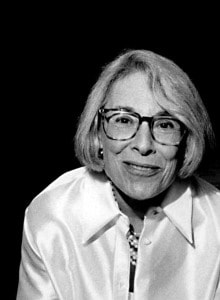 It is hard to think of New York without Mary Rodgers. Her obituary in the New York Times explained how, by dint of birth, talent and timing, she found herself at the “red-hot center of American musical theatre” for many years. That only begins to explain the vivacious, energetic, strong-willed, positive, opinionated, forceful, generous and talented person who was Mary Rodgers.
It is hard to think of New York without Mary Rodgers. Her obituary in the New York Times explained how, by dint of birth, talent and timing, she found herself at the “red-hot center of American musical theatre” for many years. That only begins to explain the vivacious, energetic, strong-willed, positive, opinionated, forceful, generous and talented person who was Mary Rodgers.
Mary was many things. She was, rather importantly for me, the person who rang one day to ask what I was up to and told me she thought I would be a good fit for the Rodgers and Hammerstein office. Her mother, Dorothy, was the official Rodgers family representative at the time, so Mary was pleased that she had been listened to when she brought my name up. (She had known me through my parents, who were great friends of hers, but also through my work running the Musical Theatre Lab.) It was a good fit; let’s face it, you don’t stay in a job for 30 years, as I have, unless it is a good fit.
When Dorothy died, Mary became my Rodgers boss, and we had many good years of working together. There was a lot of laughter and a lot of fun, but there was also a rapier-sharp and uncompromising mind at work whose perspective on all things theatre was extraordinary.
Being a charter member of the Rodgers family was only one aspect of Mary. She was a composer, and a very good one. Once Upon a Mattress, conceived at Camp Tamiment in the 1950s and tailor-made to the talents of its performers, became a hit on Broadway and continues to be a staple of theatres large and small across the country. A pre–Sex and the City Sarah Jessica Parker starred in a Broadway revival in 1996. And for Off-Broadway’s The Mad Show, she also wrote a great score, which included “The Boy From…” written with her old friend Stephen Sondheim. She contributed to Working and to the record Free to Be…You and Me. Songs by Mary Rodgers turned up in all kinds of places over the years.
She was also a writer. Freaky Friday, her teen novel of a daughter changing places with her mother for a day, became a classic of its genre, and prompted not one but two Disney films. She followed up with more books, including The Rotten Book, an ode to just how awful a child can be. (I assume this was a work of fiction, as I have known all of Mary’s children through the years, and there is nary a rotten one in the bunch!) If you want to see the devil that lurked inside Mary, take a close look at Steven Kellogg’s illustrations in The Rotten Book. They will make you laugh.
At some point in her life, Mary moved into the “giving back” mode. And she did this with extraordinary energy, skill and passion. It led her to serve on boards of educational institutions like Phillips Exeter Academy, the Brearley School and the Juilliard School. Yes, she gave whatever financial resources she could, without strings attached. But her interest in schools was also about guiding people. If she heard a young performing artist who she felt was talented, Juilliard had to fit somehow into that person’s future. She would see to that.
Mary had a trait that I will miss above all others. When we would be sitting next to each other at a rehearsal or in the theatre, and something really pleased her, she would look at me and point to her arm. It meant: “Goosebumps.” She felt them when Hugh Jackman played Curly in Oklahoma! in London. She felt them at the sitzprobe of Pipe Dream at Encores! (That, by the way, is why the CD exists.) She felt them when the stage retracted during the overture at the Lincoln Center Theater production of South Pacific. Of course, being Mary, the other end of the spectrum was conveyed with similar grace. At a screening of a particularly unfortunate film project we had gotten ourselves involved with, five minutes in she leaned over and whispered, “This is ghastly.” Five minutes later, I looked over…and she was fast asleep.
I shall miss her—a lot.
Ted Chapin is president and executive director of Rodgers & Hammerstein: An Imagem Company.

